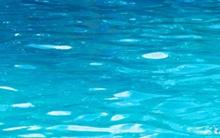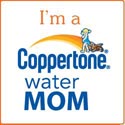
Last summer there was an article by Mario Vittone, a rescue swimmer for the United States Coast Guard that caught my eye titled “Drowning Doesn’t Look like Drowning.” Everything you learned from television about what drowning looks like is 100% wrong and learning to know the signs of someone in distress while in the water can save lives. He goes into the Instinctive Drowning Response which takes over the body causing involuntary movements and renders the person unable to call out for or wave their arms for help. The two indicators that Hollywood has taught us to be on the lookout for are physically impossible. At times people can elicit signs of aquatic distress and wave their arms and yell but if not assisted promptly they will then have an Instinctive Drowning Response. Per Mario, these are real signs that a person is drowning:
-
Head low in the water, mouth at water level
- Head tilted back with mouth open
- Eyes glassy and empty, unable to focus
- Eyes closed
- Hair over forehead or eyes
- Not using legs – Vertical
- Hyperventilating or gasping
- Trying to swim in a particular direction but not making headway
- Trying to roll over on the back
- Appear to be climbing an invisible ladder
Full Article: Drowning Doesn’t Look like Drowning
Follow Mario Vittone – Boating and Water Safety on Facebook
Another great resource for information is poolsafety.gov, it gives parents, families, and pool owners tips to keep everyone safe around the pool. Remember drowning is the 2nd highest cause of death in children under the age of 15. The leading cause is motor vehicle accidents. Stay alert and keep a watchful eye on kids around the pool. Have a fun and safe summer!
- Never leave a child unattended in a pool or spa and always watch your child when he or she is in or near water
- Teach children basic water safety tips
- Keep children away from pool drains, pipes and other openings to avoid entrapments
- Have a telephone close by when you or your family is using a pool or spa
- If a child is missing, look for him or her in the pool or spa first
- Share safety instructions with family, friends and neighbors

Follow @NolaTricia


























We are a group of volunteers and opening a new scheme in our community.
Your site offered us with valuable information to work on.
You have done an impressive job and our entire community will be thankful to you.
Howdy! I know this is somewhat off topic but I was wondering which
blog platform are you using for this site? I’m getting tired of WordPress because I’ve had issues
with hackers and I’m looking at options for another platform. I would be awesome if you could point me in the direction of a good platform.
The signs he mentioned here are true. I almost drowned when I was a kid. My cousins (teenagers) and I (I was 6) were on a boat, and somehow my cousins suddenly got into their head to jump out and take a dip. I didnt want to be the only one left up there so I jumped too…even if I didnt know how to swim. I did manage to paddle my way up but I couldn’t get my mouth up the water. I felt like I drank a gallon from that lake. I was lucky my cousin swam back when he saw that I wasnt inside the boat. Teaching a child how to swim can also give mothers some peace of mind when they go swimming.